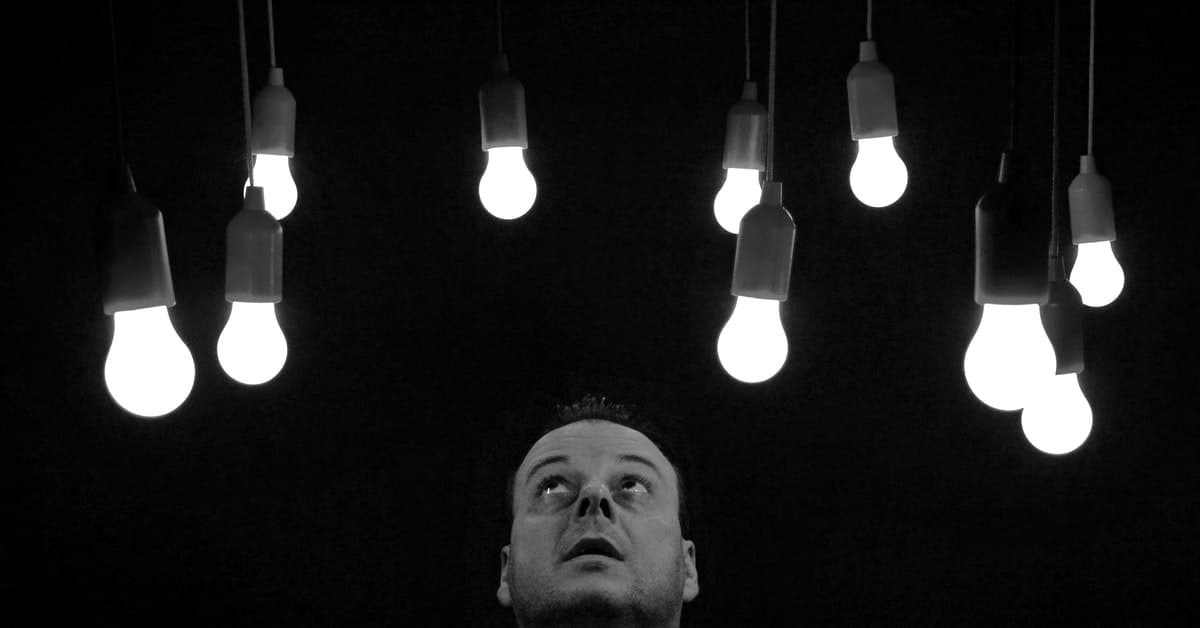Using Evidence In MBA Essays: How Conspiracy Theories Can Teach You To “Show” Not “Tell.”
July 26, 2019 :: Admissionado
What makes a claim persuasive? Every young writer has heard the dictum “show don’t tell,” but what does it actually mean? Why is everyone so hung up on it? The phrase has become such a buzzword in writing pedagogy that it can leave even the most proficient writers scratching their heads, but never fear. We’re here to help.
To clarify the difference between “showing” and “telling,” the best place to turn (or at least the most entertaining) is to any one of your favorite conspiracy theories. Yeah, you read that right. Good conspiracies are the ultimate examples of how to use evidence persuasively. Conspiracies make wild claims, yet large numbers of people actually buy into them! They’re incredibly persuasive, and you, the MBA applicant, can learn a lot from them. If a conspiracist can convince an audience of relatively intelligent humans that the Queen of England is a reptile (Google “reptilian conspiracy” if you haven’t heard of this – it’s a fun one!) then certainly you, a qualified professional with a long list of skills and accomplishments, can convince an admissions committee that you’re the right choice for their MBA program. So, how do these conspiracists do it? Simply put, they use evidence, and so should you.
What does “showing” mean?
As an example, let’s take a look at our favorite viral video: the “Monster Energy Drink Lady.” In the video, we see a middle-aged woman talking to a small group of people at some sort of conference (who knows the context for her presentation – we’re just happy someone clicked record!) The point of her presentation is simple: she’s making an argument. Specifically, she’s arguing that Monster Energy Drinks are the work of the devil, and their secret purpose is to bring satanic values into unknowing Christian homes and families. Got it? Okay.
Obviously, at face value, her claim seems ridiculous. If she stood on a street corner shouting “Monster Energy Drinks are works of the devil!” you’d probably think she were bonkers. This, friends, is what we mean when we say “telling.” It packs very little persuasive punch. The Monster lady knows this, being a smart conspiracist, and so she chooses to go the more persuasive route: “showing.”
“Showing” means using evidence to support your claim. In the Monster lady’s case, the first claim she makes refers to the brand’s catch-phrase: “Unleash the Beast.” Sure, the beast could stand for the devil, but we’re definitely not convinced. This is technically “showing,” as she is using evidence, but it’s borderline “telling” – she’s still asking you to go along with her opinion, and the skeptics amongst us (like your adcom readers) probably won’t buy into it.
So, she moves deeper into firmer evidence where there’s less room to argue: she points directly to a tangible example – what’s written straight on the can. The green, iconic “M” for Monster? No, it’s not just an “M,” it’s three disconnected Hebrew numbers: 6-6-6. She shows us the Hebrew character for 6, and sure enough, it’s a pretty good match! Then, she points to a strange cross between the circumference of the O in the brand name. “Even if the M is not the issue,” she says to her audience, “you cannot deny that there’s a cross [inside the O.] And what is witchcraft? When the cross goes upside down!” To her audience’s amazement, the Monster lady mimes drinking the beverage, turning the cross upside down in the process. “Bottoms up,” she says, and the person on the other end of the camera makes an audible “wow…”
Whether you buy that Monster Energy Drinks are actually cryptic, Satanic messaging, one can’t help but think “hmmm” when they watch that video. Even Tosh.0, in a humorous interview poking fun at the Monster lady, admits: “You know the biggest problem I had with your video? That every single thing you said made sense to me.” And he’s right. It made sense because she didn’t tell her audience anything. She showed us evidence, and only after she presented us hard facts did she construct claims based off that evidence.
You can argue with the claim that Monster is the devil’s drink, but you really can’t argue that the lettering on the can looks (coincidentally?) like Hebrew 6’s. And therein lies the beauty of evidence.
So, what does this have to do with MBA Essays?
So, as you write your MBA essays, remember this: An audience is inherently skeptical, and your MBA admissions readers will be no different. When you tell your reader, for example, you “value collaboration,” we want you to imagine the Monster lady shouting at you about the devil. No one’s going to buy it. So, instead, with every claim you want to make, think about the ways that you can use actual evidence (like the Monster lady did with the can) to SHOW your point rather than telling it. You want the adcom to know that you value collaboration? Don’t tell them anything. Instead, paint them a scene from your professional life in which you actually collaborated – a time when there was a real problem you couldn’t solve on your own, and how you effectively enlisted and led a group of colleagues to overcome that obstacle. That’s using evidence. And that is persuasive.
===
***NEW Admissionado Products & Services for MBA/Masters!***Now, read up and get smart:
- Essay Analysis Book (2018-19)
- 50 Essays That Worked (Latest Edition)
- Resume Guide
- LOR Guide
- European Crash Course
That’ll get you started. Still have questions? Reach out, and let’s gab.
Our only requirement is that you don’t prefer warm milk over cold milk. Everyone else, 100% welcome.
Email: claudia@admissionado.com
Young People: WhatsApp, or Wechat (@JonFrankHBS)
Older: Facebook, Twitter, LinkedIn
Oldest: 866-409-4753



